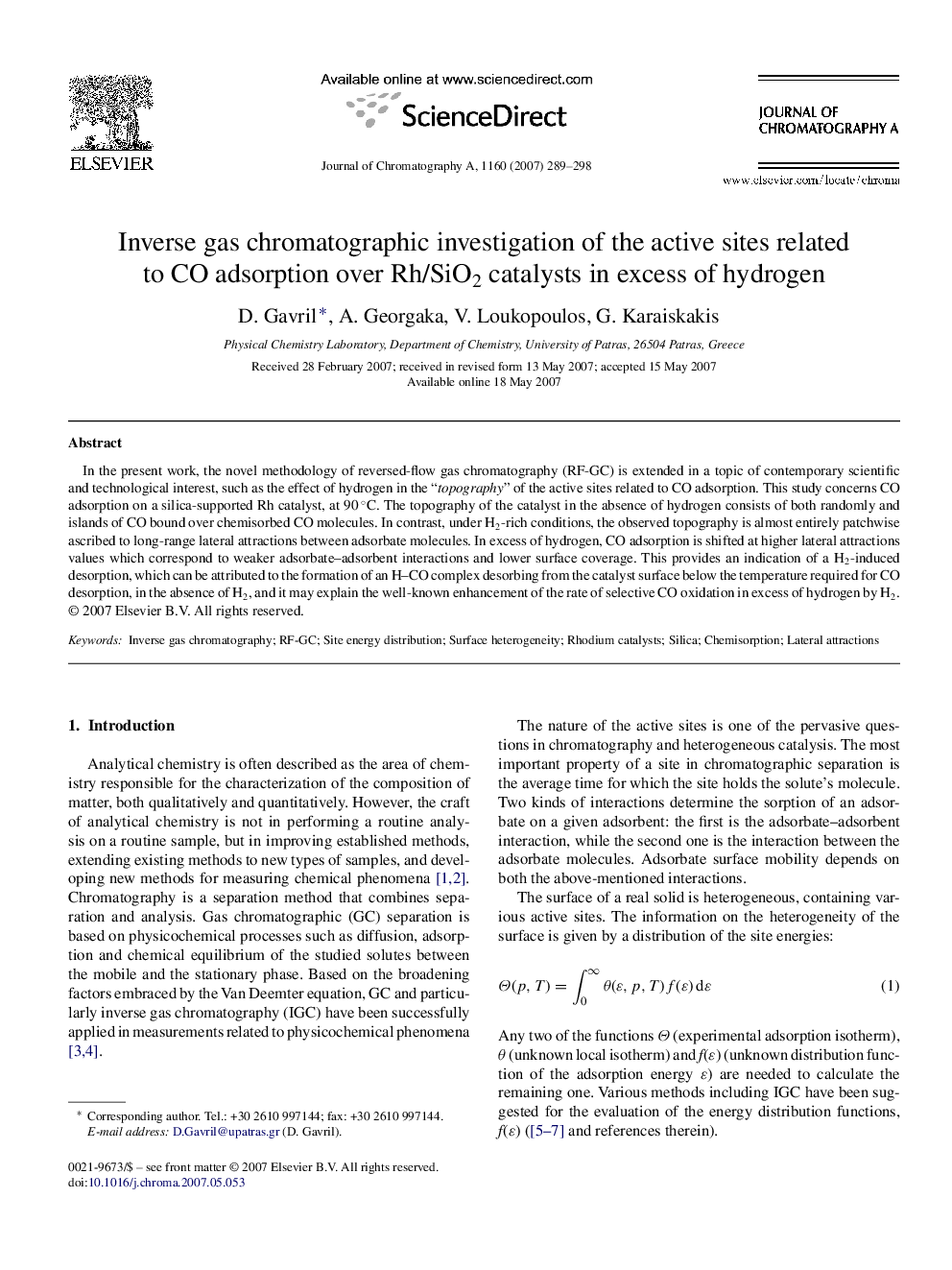| Article ID | Journal | Published Year | Pages | File Type |
|---|---|---|---|---|
| 1206884 | Journal of Chromatography A | 2007 | 10 Pages |
In the present work, the novel methodology of reversed-flow gas chromatography (RF-GC) is extended in a topic of contemporary scientific and technological interest, such as the effect of hydrogen in the “topography” of the active sites related to CO adsorption. This study concerns CO adsorption on a silica-supported Rh catalyst, at 90 °C. The topography of the catalyst in the absence of hydrogen consists of both randomly and islands of CO bound over chemisorbed CO molecules. In contrast, under H2-rich conditions, the observed topography is almost entirely patchwise ascribed to long-range lateral attractions between adsorbate molecules. In excess of hydrogen, CO adsorption is shifted at higher lateral attractions values which correspond to weaker adsorbate–adsorbent interactions and lower surface coverage. This provides an indication of a H2-induced desorption, which can be attributed to the formation of an H–CO complex desorbing from the catalyst surface below the temperature required for CO desorption, in the absence of H2, and it may explain the well-known enhancement of the rate of selective CO oxidation in excess of hydrogen by H2.
